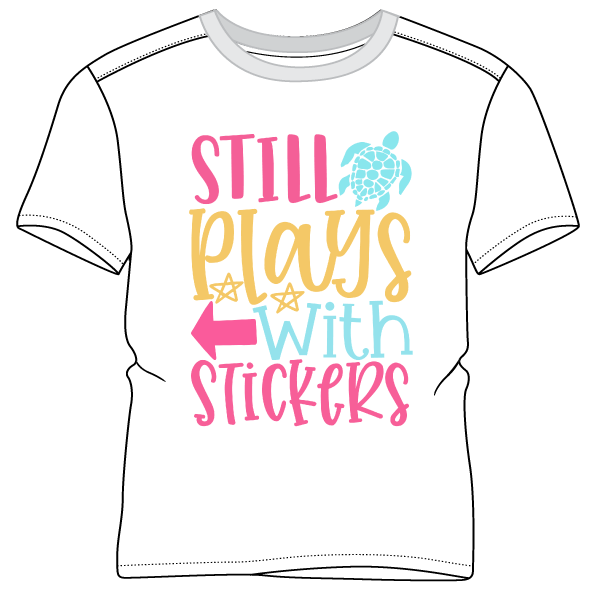Table of contents
T shirt drawing has become one of the most exciting ways to express creativity, individuality, and style. Whether you’re a beginner sketching your first design or an artist transforming your digital illustrations into fashion statements, t shirt drawing allows your imagination to come alive on fabric. It’s more than just doodling on cotton—it’s the art of transforming a simple shirt into something meaningful, personal, and eye-catching.
In this guide, you’ll learn everything you need to know about t shirt drawing, from creative techniques and materials to design principles and printing methods. By the end, you’ll be equipped to turn your sketches into wearable masterpieces that stand out.
1. Understanding the Basics of T Shirt Drawing
Before diving into creative techniques, it’s essential to understand what t shirt drawing really means. It’s the process of designing artwork—either hand-drawn or digital—that can be printed, painted, or transferred onto a T-shirt. The goal is to merge artistic vision with practical design, resulting in an appealing and wearable piece of art.
A successful t shirt drawing balances creativity with simplicity. It must look great on the shirt, reflect your personal or brand identity, and capture attention even from a distance. Unlike traditional sketching, you must consider how your art interacts with fabric, body movement, and color.
Why T Shirt Drawing Matters
- It’s a great way to showcase your art to the world.
- It helps small businesses or artists build brand identity.
- It’s a fun hobby that can turn into a profitable business.
- It offers endless possibilities—custom gifts, merch, or personal style.

2. Gathering the Right Tools for T Shirt Drawing
When starting your t shirt drawing, the tools you use play a huge role in achieving professional results. The right materials ensure your design looks vibrant and lasts through multiple washes.
Essential Tools for Hand-Drawn Designs
- Fabric Markers and Paints – Choose high-quality, permanent, and washable fabric markers or textile paints for clean, long-lasting lines.
- Pencils and Erasers – Sketch your design lightly before applying color to avoid mistakes.
- Brushes and Sponges – Ideal for blending colors and creating texture in your t shirt drawing.
- Tracing Paper or Stencils – Useful for maintaining symmetry and transferring designs.
- Iron or Heat Press – Helps set the ink or paint into the fabric for durability.
Digital T Shirt Drawing Tools
If you prefer digital design, use these tools:
- Graphic Tablets (Wacom, Huion, iPad Pro) – Ideal for precision drawing.
- Software (Adobe Illustrator, Procreate, Canva) – Enables easy editing, resizing, and color adjustments.
- Mockup Generators – Let you preview your t shirt drawing on a shirt before printing.

3. Planning Your T Shirt Drawing Design
Every great t shirt drawing starts with an idea. The planning stage determines how your art will look, feel, and connect with your audience.
Brainstorm Your Theme
Start by asking yourself:
- What message or mood do I want to convey?
- Is the design for personal use, branding, or sale?
- What style suits my personality or target audience—minimalist, bold, vintage, or abstract?
Example themes:
- Motivational quotes with hand-lettering
- Nature-inspired illustrations
- Pop culture references
- Funny or sarcastic art
- Artistic patterns or mandalas
Choose the Right Shirt Color and Fabric
Your t shirt drawing will look different depending on the shirt’s color and material.
- Light shirts make darker designs pop.
- Dark shirts work well with bright, opaque inks or paint.
- Cotton absorbs ink best, while polyester blends may need special printing techniques.
4. Sketching and Creating Your T Shirt Drawing
Now that you have an idea, it’s time to bring it to life.
Step-by-Step Process
- Start with a Rough Sketch – Use light pencil strokes or digital outlines to map out your idea.
- Refine the Lines – Clean up rough edges and adjust proportions.
- Add Details and Highlights – Focus on textures, shadows, and contrast.
- Plan the Placement – Position your t shirt drawing on a shirt template. Make sure the main focus is centered or aligned with your design goal.
- Test the Design – Print or mock it up on paper first to see how it looks on fabric.
A well-executed t shirt drawing isn’t just about art—it’s about creating balance, harmony, and readability on the shirt.

5. Choosing the Right Printing or Transfer Method
Once your t shirt drawing is ready, the next step is transferring it onto the shirt. Each printing method has its own pros and cons, depending on your design and budget.
Popular T Shirt Printing Methods
- Screen Printing
- Best for bold, vibrant colors.
- Ideal for bulk orders.
- Requires screens and ink but delivers professional results.
- Heat Transfer Printing
- Involves transferring your t shirt drawing from paper to fabric using heat.
- Great for beginners and DIY projects.
- Works well for small batches.
- Direct-to-Garment (DTG) Printing
- Prints your design directly onto the shirt using a special printer.
- Excellent for detailed or colorful t shirt drawings.
- Sublimation Printing
- Uses heat to infuse ink into polyester fabrics.
- Produces durable, full-color prints.
- Hand Painting or Drawing Directly
- Perfect for one-of-a-kind designs.
- Gives your t shirt drawing a handmade, authentic look.

6. Tips to Enhance Your T Shirt Drawing Skills
Improving your t shirt drawing skills takes practice, creativity, and experimentation. Here are some expert tips to help your designs stand out.
Practical Tips
- Keep It Simple: Overly complex designs can lose detail when printed. Aim for clear, bold shapes.
- Use Contrast: Strong color contrast ensures your t shirt drawing stands out from a distance.
- Think About Wearability: Consider how your design looks when worn, not just on paper.
- Experiment with Typography: Combine text and visuals for added impact.
- Test Before Printing: Always test your design on a sample shirt first.
Artistic Tips
- Study popular t shirt drawing trends online for inspiration.
- Play with textures, outlines, and minimalism.
- Mix digital and traditional art techniques.
- Try layering elements for a 3D effect.
- Stay consistent with your unique artistic voice.
7. Avoiding Common Mistakes in T Shirt Drawing
Even skilled artists make mistakes when starting with t shirt drawing. Here are some pitfalls to watch out for:
- Ignoring Fabric Texture: Some materials absorb ink differently. Always test before finalizing.
- Using Too Many Colors: Simplify your palette for a cleaner, professional look.
- Poor Placement: Avoid designs that sit too low or off-center.
- Low-Resolution Files: For digital t shirt drawing, use at least 300 DPI for print-quality results.
- Skipping Proofing: Always proofread text-based designs to avoid embarrassing errors.
8. Turning Your T Shirt Drawing Hobby Into a Business
With enough practice, your t shirt drawing can become more than just a hobby—it can be a profitable business. The demand for custom shirts is huge, especially in online marketplaces and social media.
How to Start
- Build a Portfolio: Showcase your best t shirt drawing designs on social platforms or a website.
- Sell on Marketplaces: Use sites like Etsy, Redbubble, or Teespring to sell your art without large upfront costs.
- Create a Brand: Develop a logo, slogan, and consistent visual identity.
- Promote Online: Use Instagram, TikTok, or Pinterest to share your process and finished shirts.
- Collaborate: Partner with influencers or local businesses for exposure.
A unique, well-crafted t-shirt drawing can help you stand out in a crowded market and attract loyal customers who love your style.
Canva TShirt Design Hacks Every Etsy Seller Should Use
9. Caring for Your T Shirt Drawings
To keep your wearable art looking new, proper care is essential.
Care Instructions
- Wash shirts inside out in cold water.
- Avoid harsh detergents or bleach.
- Air-dry or tumble dry on low heat.
- Iron inside out to protect the t-shirt drawing.
Proper maintenance helps preserve color, texture, and design quality for years.
10. Inspiring Examples of T Shirt Drawing
Looking for creative sparks? Here are some examples of what makes great tee shirt drawing designs:
- Minimalist Line Art: Simple but elegant outlines that emphasize emotion.
- Bold Graphic Art: Eye-catching designs with strong contrast and typography.
- Nature Illustrations: Trees, mountains, and animals that symbolize freedom.
- Cartoon and Pop Art: Fun, youthful, and highly expressive.
- Abstract Patterns: Unique shapes that play with color and perspective.
Exploring different styles can help you find your creative niche in the t-shirt drawing world.
T shirt drawing is more than an art form—it’s a bridge between creativity and self-expression. With the right tools, thoughtful planning, and an understanding of design principles, anyone can transform simple sketches into stunning wearable art.
Whether you’re drawing by hand or creating digital masterpieces, your t-shirt drawing journey opens endless possibilities—from personal projects to profitable ventures. So grab your sketchpad, unleash your imagination, and turn your next idea into a shirt the world will love.
👕 Claim Your Free Pack of Trendy Open-Source T-Shirt Designs! 👕